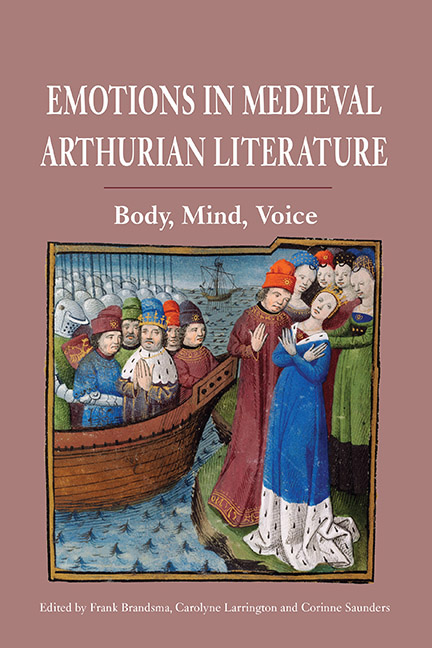4 - Ire, Peor and their Somatic Correlates in Chrétien’s Chevalier de la Charrette
Published online by Cambridge University Press: 21 May 2021
Summary
Emotions and the Medieval Romance
All readers know that the act of reading a novel triggers emotional responses. Literary texts written a thousand years ago, such as Chrétien's Chevalier de la Charrette and medieval verse romances more generally, can still produce emotional responses in modern readers because they describe emotion-related aspects of the human condition that are still part of our experiences of life. There is no doubt that literary descriptions embed emotions, even difficult emotions. And, surprisingly enough, the words or locutions for these are likely to trigger affective reactions in readers and/or audiences in ways that have yet to be clarified.
Recent advances in neuroscience may play a significant role in the understanding of such a crucial issue. David Havas, Arthur Glenberg and Mike Rinck introduce their article on emotion simulation by affirming that ‘reading a passage from a favourite novel makes it clear that language evokes emotion’. Again, assuming that ‘there is no question that language and emotion affect one another’, Glenberg and his collaborators observed that ‘when we read a novel, the words may thrill, petrify, or titillate’.
According to some experimental findings, the understanding of emotion-related descriptions may be based on an embodied knowledge that makes recognition possible. Essentially, the understanding of emotion-related situations is likely to activate the neural representation of the corresponding emotions in readers or listeners. This hypothesis is congruent with the idea that ‘the body-sensing areas constitute a sort of theatre where not only the “actual” body states can be “performed”, but varied assortments of “false” body states can be enacted as well, for example, as-if body states, filtered body states, and so on’.
Antonio Damasio, one of the most prominent neuroscientists to have studied emotions, remarks that ‘the commands for producing as-if body states are likely to come from a variety of prefrontal cortices as suggested by recent work on mirror-neurons in both animals and humans’. A mirror-matching mechanism may be responsible for the understanding of emotions felt and expressed by others both in somatic and linguistic terms.
- Type
- Chapter
- Information
- Emotions in Medieval Arthurian LiteratureBody, Mind, Voice, pp. 67 - 86Publisher: Boydell & BrewerPrint publication year: 2015



